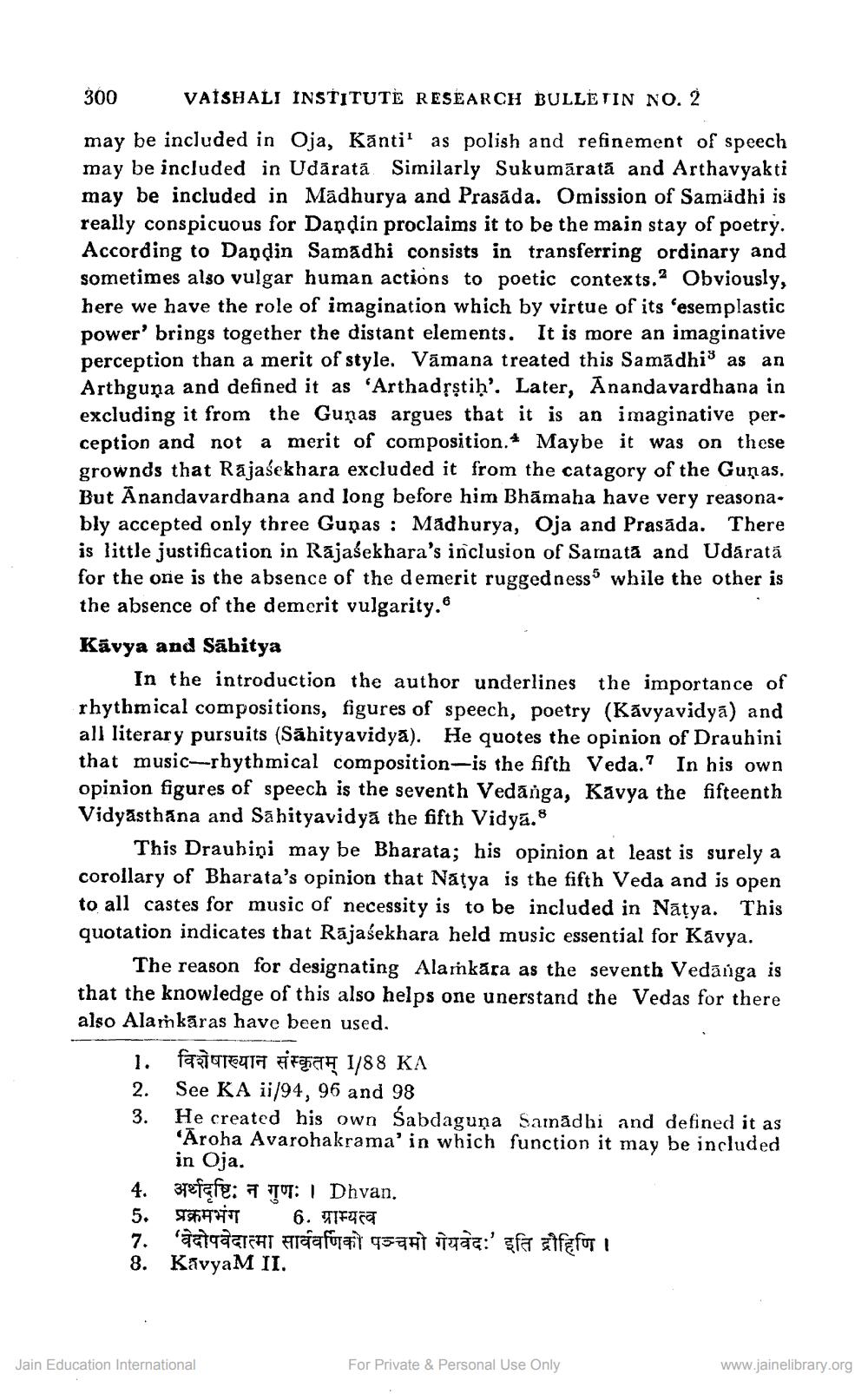________________
300
VAISHALI INSTITUTE RESEARCH BULLETIN NO. 2
may be included in Oja, Kanti' as polish and refinement of speech may be included in Udãratã Similarly Sukumārată and Arthavyakti may be included in Madhurya and Prasāda. Omission of Samadhi is really conspicuous for Dandin proclaims it to be the main stay of poetry. According to Dandin Samadhi consists in transferring ordinary and sometimes also vulgar human actions to poetic contexts.2 Obviously, here we have the role of imagination which by virtue of its esemplastic power' brings together the distant elements. It is more an imaginative perception than a merit of style. Vāmana treated this Samadhi' as an Arthguna and defined it as 'Arthadřştiḥ'. Later, Anandavardhana in excluding it from the Guņas argues that it is an imaginative per. ception and not a merit of composition. Maybe it was on these grownds that Rajasekhara excluded it from the catagory of the Guņas. But Ānandavardhana and long before him Bhāmaha have very reasona. bly accepted only three Gupas : Madhurya, Oja and Prasāda. There is little justification in Rajasekhara's inclusion of Samata and Udáratá for the one is the absence of the demerit ruggedness while the other is the absence of the demerit vulgarity. Kāvya and Sabitya
In the introduction the author underlines the importance of rhythmical compositions, figures of speech, poetry (Kavyavidya) and all literary pursuits (Sahityavidyā). He quotes the opinion of Drauhini that music-rhythmical composition-is the fifth Veda.? In his own opinion figures of speech is the seventh Vedānga, Kavya the fifteenth Vidyasthāna and Sahityavidya the fifth Vidyā.8
This Draubiņi may be Bharata; his opinion at least is surely a corollary of Bharata's opinion that Natya is the fifth Veda and is open to all castes for music of necessity is to be included in Natya. This quotation indicates that Rajasekhara held music essential for Kavya.
The reason for designating Alamkāra as the seventh Vedänga is that the knowledge of this also helps one unerstand the Vedas for there also Alarkāras have been used.
1. fasteTAT FETĦ 1/88 KA 2. See KA ii/94, 96 and 98 3. He created his own Sabdaguna Samadhi and defined it as
'Aroha Avarohakrama'in which function it may be included in Oja.
| Dhvan. 5. HT 6. TIFTET 7. atqazisht prafuit qught ittaa:' sfa alfęfor i
KavyaM II.
Jain Education International
For Private & Personal Use Only
www.jainelibrary.org




